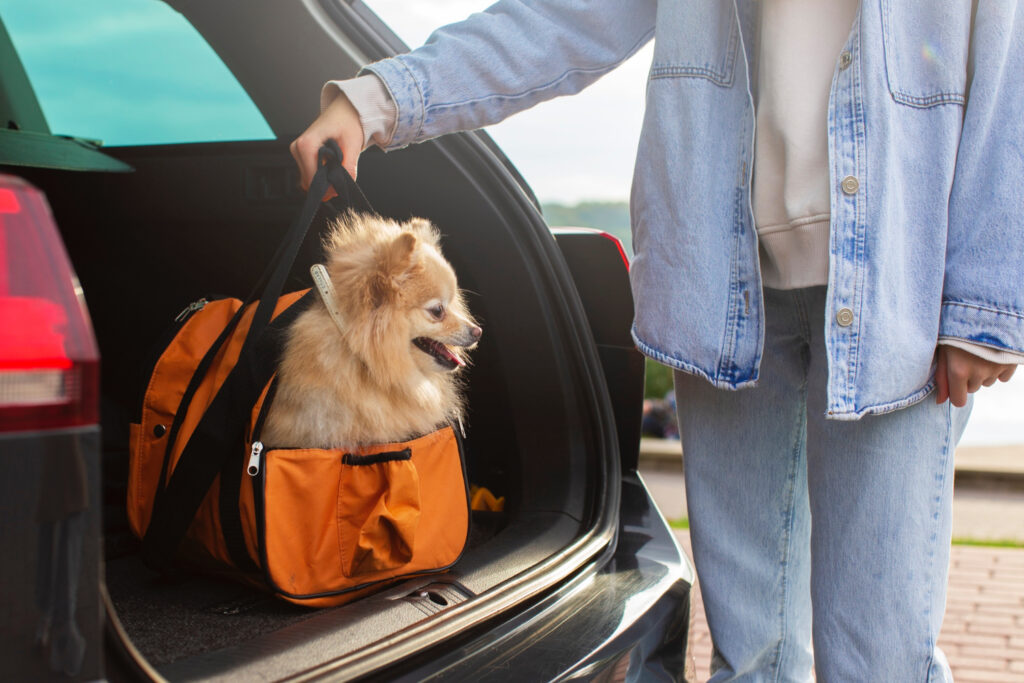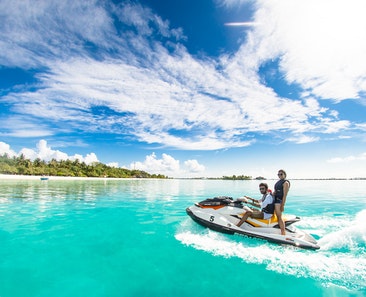How to Help Your Dog Adjust to Traveling: Tips for a Stress-Free Journey
Routines lay the foundation of dogs’ world. They include familiar scents, regular walks, and the comfort of the coziest corners at home. When your travel plans intercept their normal routine, it might appear overburdening on a few pups. Motion sickness, anxiety, and the unpredictability of the surroundings often turn any exciting trip into an overburdening ordeal. However, what if your pup really loves traveling? Imagine their twinkling eyes fixated on you with the tail wagging with joy at the first glimpse of your suitcase instead of hiding under the couch is a sight of joy. Even the tiniest pups develop familiarity, making travels appear stressful. For instance, if you have a small dog breed, then it is extremely essential to equip yourself with air travel tips for flying your dog to ensure their safety. They will embrace those new adventures mainly when you train them to deal with the travel ordeal.
The Joy of Travel for Your Canine Companion

Training your forever buddy to adapt to the new surroundings involves consistency, preparation, patience, and an in-depth knowledge of your breed’s personality. We will share a couple of ways to turn your travel plans into a stress-free, exciting journey, especially when you have a small dog breed like a Teacup Morkie.
Introduce the Travel Concept Before the Actual Trip
Dogs need a lot of time to adjust to unfamiliar and strange circumstances. Before heading out for a longer journey, ensure to expose them to small travel-like experiences. Also let your pup sit right inside a stationary car for a couple of minutes as you reward them with treats. The next step involves short drives around the blocks and eventually prolonging the duration. When your dog is accustomed to car rides and relates them with positive experiences, such as a trip to the dog-friendly part instead of a vet can significantly abate their travel anxiety.
Crate training plays a pivotal part in your travel preparations. The International Air Transport Association reported that carriers and crates are the best things to include when you choose to travel with dogs as they are darker and quieter. So, if your journey needs a crating, then ensure to introduce your pup to carriers at home to make them feel safe and cozy instead of experiencing any confinement zone. Ensure to play with your pup’s favorite blankets and toys to create a better sense of familiarity.
Pack a Canine Travel Kit
You can turn your journey stress-free for you and your pup by having a well-prepared travel bag. If you are getting your first dog, especially if you are a travel enthusiast, then include the essentials like:
- A collapsible water bowl to keep your furry companion hydrated at all times.
- Carry high-value treats to reinforce positive behavior.
- Take your dog’s favorite toys for your furry companion’s comfort.
- A harness and a leash for a prompt bathroom break.
- A first-aid kit for your pet for unexpected situations.
- A piece of clothing or a blanket with your scent for reassurance.
Packing these familiar items helps abate stress and makes your furry buddy feel more comfortable around a new space.
Air Travel: Navigating the Skies with Your Dog
Traveling with your pets takes a lot of careful planning. When your pet is small enough to travel in the cabin, a properly ventilated, airline-approved carrier is critical. For larger dogs who can’t travel in the cabin, it means taking extra measures. Following the effective air travel tips for flying your dog, such as booking flights in mild weather, can help if your pet has to spend time in the cargo holds under extreme temperature swings.
Right before the flight, ensure that you spend some additional time exercising your dog. A lethargic dog is often more likely to stay calm while in transit. Try avoiding any form of sedation unless a vet recommends it, as it can impact their breathing at higher altitudes.
Understand Motion Sickness and Anxiety
Not every dog learns to travel naturally. A few might experience drooling, nausea, and vomiting during car rides. Motion sickness can often be restricted by reducing their food intake right before travel and ensuring they have easy access to fresh water. The vets even suggest the safest nausea medications for more serious cases.
For breeds prone to anxiety, soothing solutions like pressure wraps, pheromone sprays, or herbal remedies prove effective. There are even different ways to prevent excessive drooling in dogs and prevent them from becoming nauseous. Soft audiobooks or music with a calming voice often create a highly relaxed atmosphere.
Plan Frequent Breaks and Stretch Time
Similar to humans, even dogs will require a certain amount of movement to remain comfortable during longer trips. Ensure to take frequent breaks to allow them to stretch their small limbs, relieve themselves or explore their new surroundings. For instance, if you have a Teacup Maltese or any other small dog breeds, their delicate frame and compact size will benefit considerably from gentle walks in quiet spots instead of the busier rest areas that might appear stressful.
You can even use these breaks for mini-training sessions, using commands like “stay” or “sit.” This helps reinforce good behavior and keep their minds engaged.
Safety Comes First—Always
Having your dog properly secured during the travel is more than comfort as it also involves considering safety. The free-roaming dogs inside a moving vehicle may make them prone to danger. Try using a crash-tested dog harness, a pet car seat, or a secured crate. If you travel by air, research the airline’s pet policies in advance to ensure that your crate meets every regulation.
Never leave your dog alone in a parked car, even for a couple of minutes, especially on road trips. Following important dog travel tips, such as monitoring temperature fluctuations, can help prevent severe health risks.
Choose Dog-Friendly Accommodations
It is important to understand that not all hotels or places you choose to stay are pet-friendly. A few of them might have stringent policies on the size and behavior of the dog breed. Ensure to do extensive research beforehand and find accommodations with dog-friendly amenities like walking trails, fenced-in areas, or pet-welcome kits.
Try bringing along a dog bed from home to make their new surroundings less intimidating. New pet parents should establish a familiar sleeping spot sooner, as it helps instill a sense of security that makes the entire journey stress-free. This is a vital consideration, especially when you are preparing for your first pet.
International Travel: The Passport to Adventure
Traveling with your pup across the borders involves more than simply booking a ticket. Every country has its specific mode of entry protocols, which include health certificates, vaccinations, and quarantine regulations. Inspect all requisite paperwork almost weeks ahead of time to avoid any last-minute surprises.
A couple of destinations involve microchipping or additional health screenings, so proper planning is requisite here. Also, ensure that your dog has updated identification tags and microchips connected to your current contact details, which is the key to any unexpected separation.
Create Positive Associations with Travel
To help your dogs become comfortable travelers, they must find travel enjoyable instead of overburdening. Reward their calm behavior with praise and treats. If you travel by car, ensure to surprise them with a fun destination like a hiking trail or a pet-friendly beach.
Creating positive associations at an early age makes future trips effortless. A few dogs would eventually get accustomed to travel as they eagerly hop into the car, prepared for the upcoming adventure.
Conclusion
When you plan a travel with your furry companion, it paves new pathways to create some endless experiences that build an in-depth companionship and a memory to last for a lifetime. Each journey introduces your pup to new scents, sights, and moments, adding joy to both you and your pup. Following the right approaches and patience will transform even the hesitant pup to grow a love for new adventures. Over time, your pup starts to associate travel with curiosity, excitement, and the comfort of being curled up right beside you!
The post How to Help Your Dog Adjust to Traveling: Tips for a Stress-Free Journey appeared first on American Travel Blogger.



